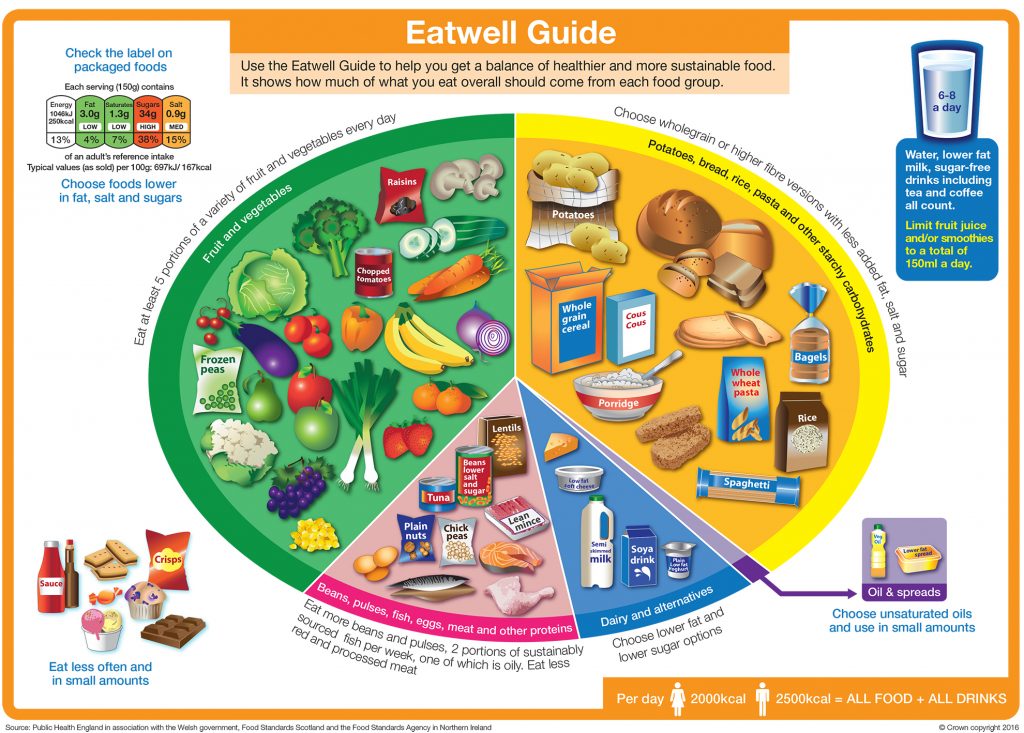Eat your way to a healthier you
We are often asked about diet during recovery from Guillain-Barré syndrome or living with chronic condition such as CIDP.
There is increasing evidence that the microbiomes in your gut have a large part to play in matters concerning health and mood, with some being cited for combatting everything from obesity to depression. We’re keeping an eye on research in this area and will of course keep you informed of any evidence-based breakthroughs that may benefit people suffering from imflammatory neuropathies.
In the meantime (even if you tend to be sceptical about the latest food trends and view every New Miracle Diet as nothing but a fad), opting for a balanced diet coupled with regular exercise, within whatever limitations you currently have, is a good choice for most people.
Keep a diary. Make a note of foods that you either increase or cut down on, and whether there is any notable change in your energy and pain levels, physical capacity and mood. Bear in mind that any benefits from a change in diet may be very gradual. include levels of exercise in your diary as this will also have an impact on you are feeling.

Unless you have specific dietary requirements or preferences, the general advice for people affected by peripheral neuropathy is to follow recommendations in the NHS Eatwell Guide;
- Eat a wide range of fresh fruit and vegetables and choose whole grain / whole wheat alternatives instead of highly processed cereals, bread & pasta
- Eat lots of differently coloured food as each colour carries its own compounds called phytochemicals, which are now believed to be beneficial to health
- Reduce your intake of red meat by eating more lean poultry and fish (including at least one portion of oily fish per week) and replacing or supplementing meat with lentils, pulses and beans
- Strictly limit fats, sugar, alcohol and processed meats
- Drink at least 6-8 glasses of water a day
For more on the NHS Eatwell Guide visit; https://www.nhs.uk/live-well/eat-well/the-eatwell-guide/

Red – Contain antioxidants including lycopene, anthocyanins, ellagic acid and astaxanthin.
Lycopene gives red fruits their colour. It is thought to have antioxidant properties that may help reduce blood pressure and cholesterol.
Cherries, cranberries, radishes, red apples, red grapes, red peppers, tomatoes, watermelon
Orange – High in carotenoids, such as alpha-carotene and beta-carotene.
Beta-carotene gives yellow and orange fruits and vegetables their colour and is converted to vitamin A in the body, where it helps us make hormones and keeps our eyes healthy.
Carrots, cantaloupe melon, mangoes, nectarines, orange peppers, pumpkin, sweet potatoes
Yellow – Contain carotenoids including beta-carotene and beta-cryptoxanthin.
As with orange fruit and vegetables, beta-carotene gives yellow varieties their colour. Like beta-carotene, our bodies can convert beta-cryptoxanthin into vitamin A.
Butternut squash, honeydew melon, lemons, papaya, peaches, persimmons, swede, yellow peppers
Blue/Purple – Anthocyanins, giving blue and purple foods their rich colours are powerful antioxidants, which may have a role in protecting cells from damage. Nitrates are also present in many blue and purple foods as well as others.
Aubergines, blackberries, blackcurrants, blueberries, purple grapes, red cabbage, purple beetroot, purple lettuce
Green – Chlorophyll gives green fruits and vegetables their colour, but many green vegetables are rich in other nutrients such as sulforaphane, glucosinolate, lutein and zeaxanthin.
May slow the progression of age-related macular ddegeneration and help protect against blood-vessel damage and certain cancers.
Researching whether sulforaphane could help protect against the damage caused by heart attacks, stroke and gestational diabetes.
Leafy green vegetables, apples, asparagus, avacados, celery, courgettes, cucumbers, limes, mange tout, sugar snap peas
White/Beige – Anthoxanthins are the pigments that create white or cream colours. Some studies have suggested that anthoxanthins may reduce the risk of Cardiovascular Disease and inflammatory conditions such as arthritis, but there is not enough evidence for these to be recommended over other colours.
Bananas, celeriac, garlic, Jerusalem artichokes, mushrooms, onions, turnips, white peaches
